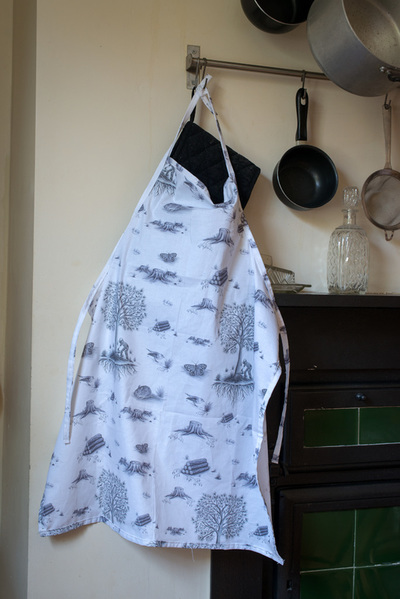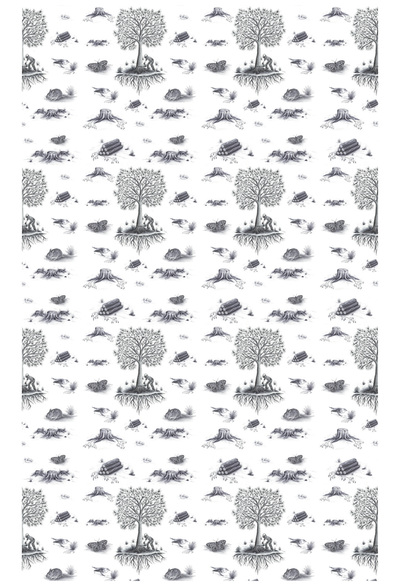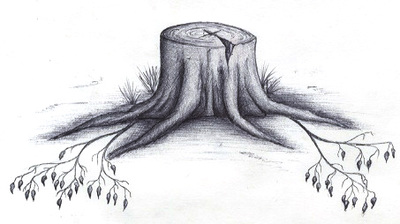DEFORESTATION
Nicolas inspiration for this piece came from her concerns for our forests across the globe and the damaging effect deforestation has on the wildlife that relies upon the forests to survive.
In order to highlight the effect that deforestation is having on wildlife and the natural world she chose to show an insect, a bird, and a mammal to further represent how much wildlife it actually affects.
As this is a global issue she believed it should be addressed globally and not narrowed to a specific location or forest and so she chose to depict animals from different areas of the world. Such as the Cerulean Warbler, which can be found in many countries these being the Bahamas, Belize, Bolivia, Brazil, Canada, Columbia, Costa Rica, Cuba, Ecuador, Guatemala, Honduras, Jamaica, Mexico, Netherlands Antilles, Panama, Peru, United States, Venezuela, all areas that have lots of dense woodland, but that is also ever increasing the deforesting for building materials, farming and paper. It's clear that deforestation plays a big part in the population reductions as not only do they rely upon these forests to create their nests and lay eggs, but also their food supply becomes disturbed and their nests become exposed to other birds resulting in the death of their chicks.
However she didn't just want to focus on endangered animals, This led her to draw animals that rely on the woodland to survive but that also aren't necessarily in any immediate threat, just yet. She chose to depict something that perhaps we’re more fond of than your average beetle, but something that we could see a decline in numbers if we allowed their habitats here in England to be destroyed. Thankfully much woodland in England is protected and this may be why this particular butterfly, the speckled wood butterfly is surviving. By showing a recognisable insect, she is able to represent the positives of woodland protection but also highlights the seriousness that this butterfly could just as easily never be seen again if we allowed it to fall victim to deforestation as well.
The wood-mouse is also an animal that appears across a range of countries, they require woodland areas to survive due to how they live and what they eat. They require almost everything about the forest, to nest they either go below ground, or create nests from moss and leaves in holes in trees. They feed on fruits, seeds, insects, and fungi, all found within woodlands. Though these are quite a common animal at the moment, they are very much in danger of that changing in the near future if deforestation continues, the woodlands are vital for their survival. If the rate of deforestations continues, or expands, we could see a drop in their numbers and this could have a serious knock on effect to animals higher up in the food chain.
In order to highlight the effect that deforestation is having on wildlife and the natural world she chose to show an insect, a bird, and a mammal to further represent how much wildlife it actually affects.
As this is a global issue she believed it should be addressed globally and not narrowed to a specific location or forest and so she chose to depict animals from different areas of the world. Such as the Cerulean Warbler, which can be found in many countries these being the Bahamas, Belize, Bolivia, Brazil, Canada, Columbia, Costa Rica, Cuba, Ecuador, Guatemala, Honduras, Jamaica, Mexico, Netherlands Antilles, Panama, Peru, United States, Venezuela, all areas that have lots of dense woodland, but that is also ever increasing the deforesting for building materials, farming and paper. It's clear that deforestation plays a big part in the population reductions as not only do they rely upon these forests to create their nests and lay eggs, but also their food supply becomes disturbed and their nests become exposed to other birds resulting in the death of their chicks.
However she didn't just want to focus on endangered animals, This led her to draw animals that rely on the woodland to survive but that also aren't necessarily in any immediate threat, just yet. She chose to depict something that perhaps we’re more fond of than your average beetle, but something that we could see a decline in numbers if we allowed their habitats here in England to be destroyed. Thankfully much woodland in England is protected and this may be why this particular butterfly, the speckled wood butterfly is surviving. By showing a recognisable insect, she is able to represent the positives of woodland protection but also highlights the seriousness that this butterfly could just as easily never be seen again if we allowed it to fall victim to deforestation as well.
The wood-mouse is also an animal that appears across a range of countries, they require woodland areas to survive due to how they live and what they eat. They require almost everything about the forest, to nest they either go below ground, or create nests from moss and leaves in holes in trees. They feed on fruits, seeds, insects, and fungi, all found within woodlands. Though these are quite a common animal at the moment, they are very much in danger of that changing in the near future if deforestation continues, the woodlands are vital for their survival. If the rate of deforestations continues, or expands, we could see a drop in their numbers and this could have a serious knock on effect to animals higher up in the food chain.











